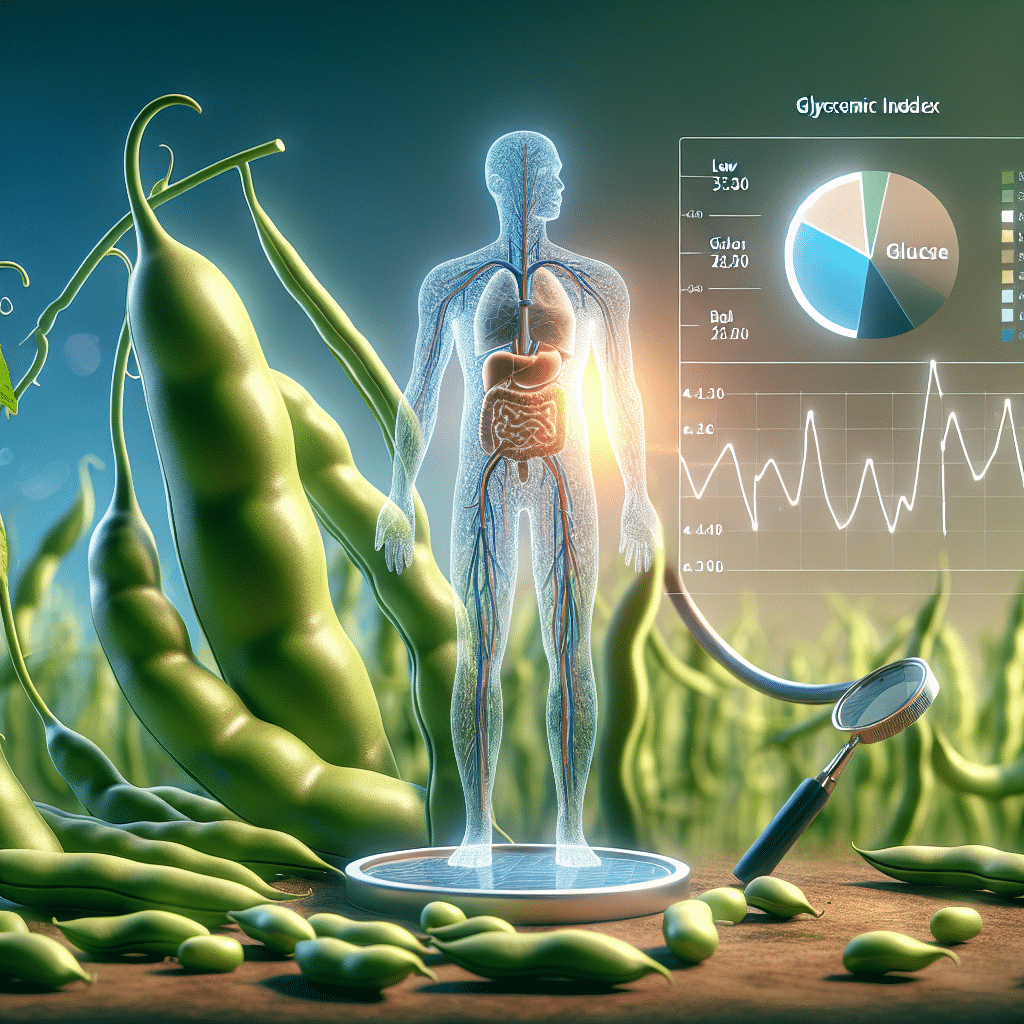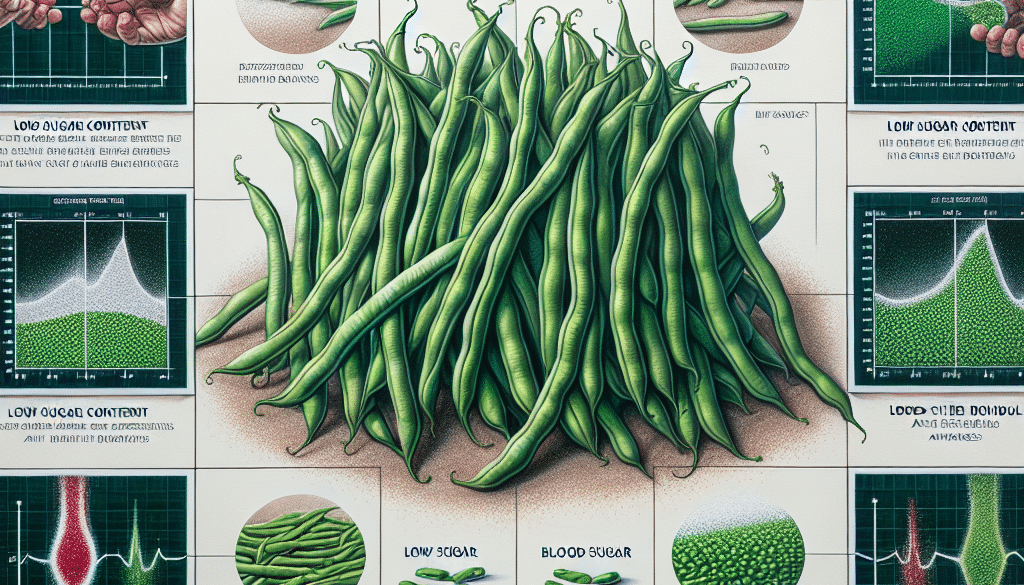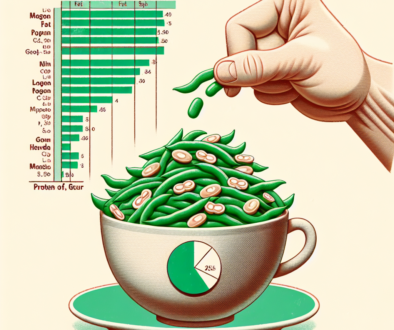Glycemic Impact of String Beans
-
Table of Contents
- Glycemic Impact of String Beans: A Comprehensive Guide
- Understanding the Glycemic Index and Glycemic Load
- Nutritional Profile of String Beans
- The Glycemic Impact of String Beans
- Role of Dietary Fiber
- Portion Size and Preparation
- String Beans in a Diabetic Diet
- Benefits for Blood Sugar Control
- Incorporating String Beans into Meals
- Research on the Glycemic Impact of String Beans
- Case Studies and Clinical Trials
- Statistics on Diabetes and Diet
- Comparing String Beans to Other Vegetables
- Practical Tips for Including String Beans in Your Diet
- Conclusion: The Benefits of String Beans for Blood Sugar Management
- Discover ETprotein’s High-Quality Protein Products
Glycemic Impact of String Beans: A Comprehensive Guide

String beans, also known as green beans or snap beans, are a staple in many diets around the world. They are not only a versatile and delicious vegetable but also have a range of health benefits, particularly when it comes to blood sugar management. This article delves into the glycemic impact of string beans, exploring how they can be a beneficial addition to a balanced diet, especially for those managing diabetes or looking to maintain healthy blood sugar levels.
Understanding the Glycemic Index and Glycemic Load
Before we examine the specific impact of string beans on blood sugar, it’s important to understand two key concepts: the glycemic index (GI) and glycemic load (GL).
- Glycemic Index (GI): This is a measure that ranks foods on a scale from 0 to 100 based on how much they raise blood sugar levels after eating. Foods with a high GI are rapidly digested and absorbed, causing a quick rise in blood sugar, while foods with a low GI are digested and absorbed more slowly, leading to a gradual rise in blood sugar.
- Glycemic Load (GL): This measure takes into account the GI as well as the amount of carbohydrates in a serving of food. It provides a more accurate picture of a food’s real-life impact on blood sugar levels.
Both GI and GL are useful tools for individuals looking to manage their blood sugar levels through diet.
Nutritional Profile of String Beans
String beans are a nutrient-dense food, meaning they are low in calories but high in vitamins and minerals. Here’s a breakdown of their nutritional content:
- Low in calories
- High in dietary fiber
- Rich in vitamins A, C, and K
- Contains minerals such as iron, calcium, and magnesium
- Includes plant-based proteins
- Very low in fat and free from cholesterol
This combination of nutrients makes string beans an excellent food for overall health and particularly beneficial for blood sugar management.
The Glycemic Impact of String Beans
String beans have a low GI, typically ranging between 15 and 30, which makes them an excellent food choice for those looking to control their blood sugar levels. The low GI, coupled with their high fiber content, ensures that string beans have a minimal impact on blood sugar.
Role of Dietary Fiber
The dietary fiber in string beans slows down the digestion and absorption of carbohydrates, preventing spikes in blood sugar levels. This is particularly important for individuals with diabetes or insulin resistance.
Portion Size and Preparation
The glycemic impact of string beans can also be influenced by portion size and how they are prepared. Consuming them in moderation and using cooking methods that preserve their nutrient content, such as steaming or sautéing, can help maintain their low GI.
String Beans in a Diabetic Diet
For individuals with diabetes, incorporating string beans into their diet can be a smart move. Their low GI and GL make them a safe choice that won’t cause significant blood sugar fluctuations.
Benefits for Blood Sugar Control
Regular consumption of string beans can contribute to better blood sugar control due to their low glycemic impact. They can be a part of a balanced meal that includes a source of lean protein and healthy fats to further stabilize blood sugar levels.
Incorporating String Beans into Meals
String beans can be added to salads, stir-fries, or served as a side dish. They are also a great addition to soups and stews. Their versatility makes it easy to include them in a diabetic-friendly diet.
Research on the Glycemic Impact of String Beans
Several studies have investigated the effects of low-GI foods like string beans on blood sugar control. Research has consistently shown that diets rich in low-GI foods can improve glycemic control in people with type 2 diabetes.
Case Studies and Clinical Trials
Case studies and clinical trials have demonstrated that participants who follow a low-GI diet experience lower blood sugar levels post-meal and improved HbA1c levels, which is a long-term indicator of blood sugar control.
Statistics on Diabetes and Diet
Statistics show that dietary interventions, including the consumption of low-GI foods, can play a significant role in managing diabetes. According to the American Diabetes Association, a low-GI diet can reduce HbA1c levels by approximately 0.5%.
Comparing String Beans to Other Vegetables
When compared to other vegetables, string beans stand out due to their low GI and high nutrient content. Here’s how they compare to other common vegetables:
- Carrots have a moderate GI but can still be included in a balanced diet.
- Leafy greens like spinach and kale have a very low GI and are also rich in nutrients.
- Potatoes have a higher GI, so portion control is important when including them in a meal.
Choosing a variety of low-GI vegetables, including string beans, can help diversify nutrient intake and support blood sugar management.
Practical Tips for Including String Beans in Your Diet
Here are some practical tips for incorporating string beans into your diet:
- Choose fresh or frozen string beans for the highest nutrient content.
- Steam or sauté string beans with herbs and spices for added flavor without increasing the GI.
- Mix string beans with other low-GI vegetables for a nutrient-packed meal.
- Use string beans as a base for plant-based protein dishes.
- Snack on raw string beans with a healthy dip like hummus.
By following these tips, you can enjoy the health benefits of string beans while keeping your blood sugar levels in check.
Conclusion: The Benefits of String Beans for Blood Sugar Management
In conclusion, string beans are an excellent food choice for those looking to manage their blood sugar levels. Their low glycemic index, high fiber content, and rich nutrient profile make them a valuable addition to any diet, particularly for individuals with diabetes. By incorporating string beans into a balanced diet, you can enjoy their health benefits while maintaining stable blood sugar levels.
Discover ETprotein’s High-Quality Protein Products
If you’re looking to complement your healthy diet with high-quality protein sources, consider ETprotein’s range of organic bulk vegan protein and plant proteins. Their products, including Organic rice protein, clear rice protein, pea protein, clear pea protein, pumpkin seed protein, sunflower seed protein, and mung bean protein, are characterized by a neutral taste and are non-GMO and allergen-free.
ETprotein caters to a diverse range of industries, serving nutraceutical, pharmaceutical, cosmeceutical, veterinary, as well as food and beverage finished product distributors, traders, and manufacturers across the globe. Their specialization in exporting and delivering tailor-made protein powder and finished nutritional supplements ensures comprehensive solutions to meet all your protein needs.
As a trusted company by leading global food and beverage brands and Fortune 500 companies, ETprotein reinforces China’s reputation in the global arena. For more information or to sample their products, please contact them and email sales(at)ETprotein.com today.
About ETprotein:
ETprotein, a reputable protein Chinese factory manufacturer and supplier, is renowned for producing, stocking, exporting, and delivering the highest quality organic bulk vegan protein and plant proteins. They include Organic rice protein, clear rice protein, pea protein, clear pea protein, pumpkin seed protein, sunflower seed protein, mung bean protein, etc. Their offerings, characterized by a neutral taste, non-GMO, allergen-free attributes, cater to a diverse range of industries. They serve nutraceutical, pharmaceutical, cosmeceutical, veterinary, as well as food and beverage finished product distributors, traders, and manufacturers across Europe, USA, Canada, Australia, Thailand, Japan, Korea, Brazil, and Chile, among others.
ETprotein specialization includes exporting and delivering tailor-made protein powder and finished nutritional supplements. Their extensive product range covers sectors like Food and Beverage, Sports Nutrition, Weight Management, Dietary Supplements, Health and Wellness Products, and Infant Formula, ensuring comprehensive solutions to meet all your protein needs.
As a trusted company by leading global food and beverage brands and Fortune 500 companies, ETprotein reinforces China’s reputation in the global arena. For more information or to sample their products, please contact them and email sales(at)ETprotein.com today.














